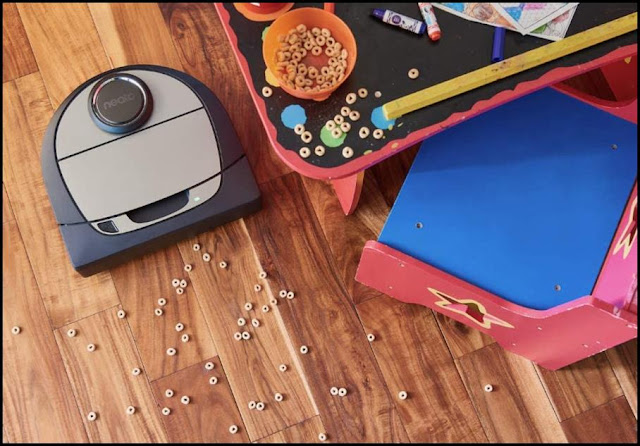Getting a robotic vacuum might sound like a tempting option if you don’t have the time or energy to clean after spending long hours at work. Cleaning isn’t fun, especially when you have to spend your weekend collecting dust and mopping floors. But robotic vacuums are a problem solver. They are smart devices that can clean your house with only a few buttons.
They require minimum attention and clean even the most difficult places like under the bed or under wardrobes. But if you have hardwood floors, you might be worried that the robotic vacuum can scratch or damage your floor. Your fear might be a little unfounded.

Can robotic vacuums damage hardwood floors?
If you choose the correct model and take extra care, your robotic vacuum will clean your hardwood floors perfectly without causing any damage. You might have to take extra care of a few things when using a robotic vacuum on a hardwood floor, but they can definitely be used on hardwood floors. Even if you have pets, some robotic cleaners do a great job at cleaning wooden floors with pet fur. The trick is to choose the correct robotic vacuum.
What can cause damage to hardwood floors?
Hard brush bristles
Some robotic cleaners have hard bristles, These might be good for other surfaces, but they are a very bad idea for hardwood floors as the hard bristles can scratch the floor. Before buying a robotic cleaner, make sure that your robotic cleaner has soft brushes that don’t have the potential to scratch the hardwood surface.
If sharp objects or sand grains get stuck
Even though robotic vacuums can’t scratch hardwood floors on their own, if something like a grain of dust, or a plastic bit gets stuck under the robotic vacuum, the device might drag it across the floor causing scratches. Robotic vacuums are heavy and when a sharp object gets dragged under that weight, scratches can be bad.
If the front wheel gets jammed
The front wheel swivels and helps the robotic vacuum move across the floor. If the front wheel moves swiftly, the robotic vacuum will also move swiftly on the floor causing no problems. However, if hair, cables, or other foreign objects get stuck in the wheel and restrict its movement, then the device will have to drag itself across the floor. This dragging can also cause scratches on the wooden floor.
If the robotic vacuum is about to die before reaching its home base
The robotic vacuum generally charges itself fully when it is in its home before the cleaning process. But if for some reason, the robotic vacuum’s battery is low when it is trying to go home, it might drag itself across the floor. Just like in the previous point, if the robotic vacuum drags itself across the floor, it might cause scratches on your hardwood floor.
If the home base has a lot of dust particles
If the home base of your robotic vacuum has dirt particles, it becomes really easy for the device to pick up grains of sand on its wheels. When you start cleaning with it, it might carry those dust particles with it on the floor and cause scratches.
Can these scratches be prevented?
Yes, it is possible to avoid these scratches if a little extra care is taken. You can definitely still use a robotic vacuum on your hardwood floor.
Remove all cables and other wires
Robotic vacuums tend to get stuck in wires and other cables very easily. They might also eat up these things. So it very important to remove all wires, cables, shoe-laces, and other such objects before you start the robotic vacuum.
Make sure there are no small pieces of jewelry or toys on the floor.
Unlike big toys, small bits of toys and small pieces of jewelry can be hard to spot. But these things, if they get stuck under the wheels of a robotic cleaner can badly scratch your floor. It is anyway crucial to have a look on the floor before starting the robotic cleaner because you wouldn’t want your precious jewels in the garbage bin.
Remove strands of hair from the floor
Long strands of hair can be really bad for robotic cleaners. Long strands of hair get tangled in the wheels very easily and disrupt the smooth movement of the device. So before you start cleaning with your robotic vacuum, collect as many strands of hair from the floor as you possibly can.
Be around the robotic cleaner while it is cleaning
If you are around while your robotic cleaner is doing its job, you will be able to monitor it for any errors. For example, if you see that your robotic cleaner is dragging itself across the floor, you can immediately stop it and check what is causing the problem. You don’t really have to walk around the house with your robotic cleaner, but just keep an eye on the device while it cleans your home.
Choose the correct design for your floor
If you do your research properly before buying your robotic vacuum, then you might not need to be so vigilant all the time. It is great to be careful, but if you buy a robotic vacuum that is designed for hardwood floors, you can rest assured that the device won’t cause damage to your floor. Therefore it is important to check all the specifications before buying your robotic vacuum.
Conclusion
It can be safely concluded that robotic vacuums can be used on hardwood floors and that they don’t cause damage to your floor if you use them properly. However, if you want to be completely sure that you can use a robotic vacuum on your floor, call the people who installed the flooring in your house and talk to them about the issue. They might even be able to provide you with a particular robotic vacuum that would work best for your hardwood floor.


0 Comments